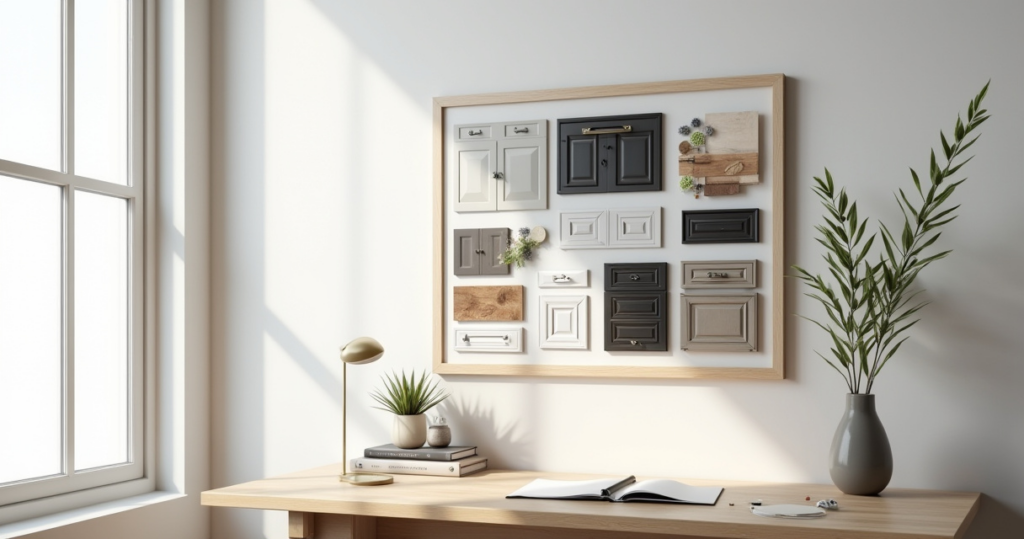Picture this: You’re standing in a kitchen in a Jaipur haveli, the sun filtering through a carved jali screen, casting intricate patterns on the floor. The air is warm, thick with the scent of cardamom and brewing chai. Now, picture a farmhouse kitchen in the rolling hills of Vermont, the cozy aroma of apple pie baking in the oven. You might think these two places are worlds apart, and in many ways, you’re right. But the feeling they evoke—that deep sense of home, of nourishment, of a space built for generations—is exactly the same.
You’ve likely seen hundreds of gorgeous farmhouse kitchens online. You’ve got the Pinterest boards filled with beautiful white Shaker cabinets, apron-front sinks, and reclaimed wood. Yet, so many of these spaces feel like sterile copies of one another, lacking that vital spark, that soul. The secret to creating a truly authentic space isn’t just following a formula; it’s about infusing your kitchen with story and spirit, a principle I learned not in a design studio, but from the artisans in the bustling markets of India. These 22 secrets are your guide to transforming a design trend into a living, breathing heart of your home.
Planning Your Authentic Farmhouse Cabinet Design (Part 1)
This is where we lay the foundation. Think of this stage like an artist preparing a canvas. Before you even think about the color of the paint, you must understand the texture, the size, and what you ultimately want the final piece to say. Getting this right saves you so much heartache later.
1. Defining Your Farmhouse Style Sub-Niche for Cabinets
Can we talk about how “farmhouse” has become a catch-all term? It’s like saying you’re cooking “Indian food.” Are we talking about a fiery Goan fish curry or a subtle, creamy Kashmiri korma? They are entirely different worlds! The same is true for farmhouse style. You must decide what story you want your kitchen to tell before you pick a single cabinet door. Is it a modern, clean version with sleek lines, or is it rustic and weathered, as if it’s been in your family for a century?
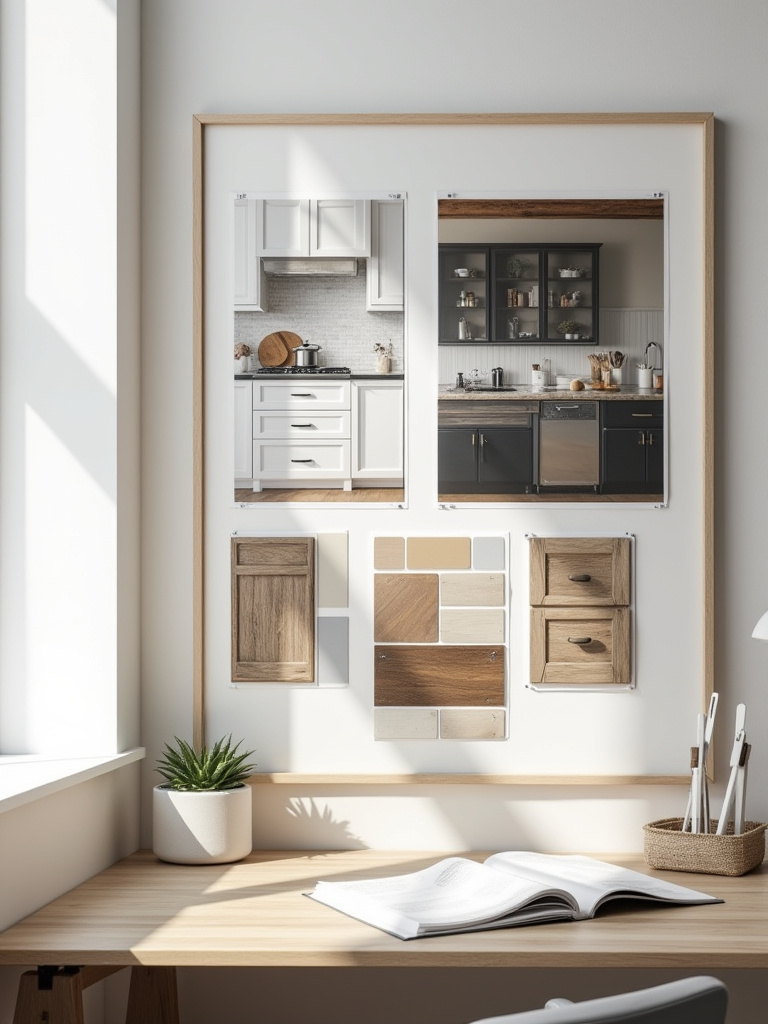
The biggest mistake I see is people trying to do everything at once. I once had a client whose kitchen looked like a design garage sale—a bit of industrial here, a touch of French country there. It was chaotic because there was no core story. The shortcut I wish I’d known earlier is to choose three words that define your vision—like “Earthy, Modern, and Warm” or “Vintage, Airy, and Handcrafted.” Every single choice, from the cabinet profile to the finish, must align with those three words. This is your compass.
Now that you’ve found the spirit of your design, let’s ground it in the reality of your space.
2. Assessing Kitchen Layout for Optimal Farmhouse Cabinet Flow
You know what people always ask me about kitchen design? “Where do I put everything?” And my answer is always to think about how you move. A kitchen is a dance, whether you’re making a simple cup of tea or a feast for twenty. Your cabinets are your partners in this dance, and if they’re in the wrong place, you’ll be tripping over them constantly. The “work triangle”—the path between your sink, stove, and refrigerator—is a classic for a reason. It’s about efficiency and grace.
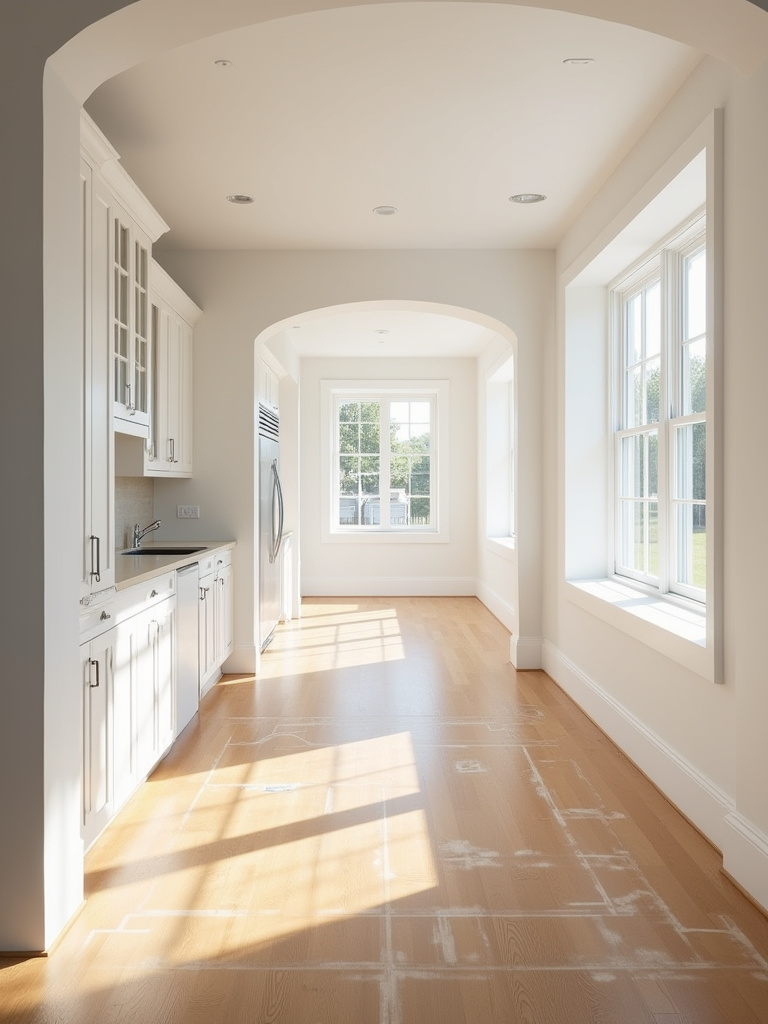
So many people get fixated on a giant island they saw in a magazine, but they don’t have the space for it. They end up with these tiny, frustrating pathways where you can’t even open the dishwasher and the oven at the same time. The BS is thinking a “look” is more important than function. What’s truly important is flow. Before you commit, use painter’s tape on the floor to mark out where your new cabinets and island will be. Walk the space for a few days. Does it feel natural? Or does it feel like a cramped obstacle course? This simple trick has saved my clients thousands of dollars and endless frustration.
With a clear flow in mind, we can now decide what we need our cabinets to do.
3. Prioritizing Cabinet Functions: Storage, Display, and Appliances
Let’s be honest with each other. For all the beautiful open shelving we see, most of us have a collection of mismatched Tupperware, half-used bags of flour, and that blender you got as a wedding gift that you’ve used twice. Your cabinets need to be hardworking workhorses, not just pretty faces. The key is to create a balance between what you need to hide and what you want to celebrate.
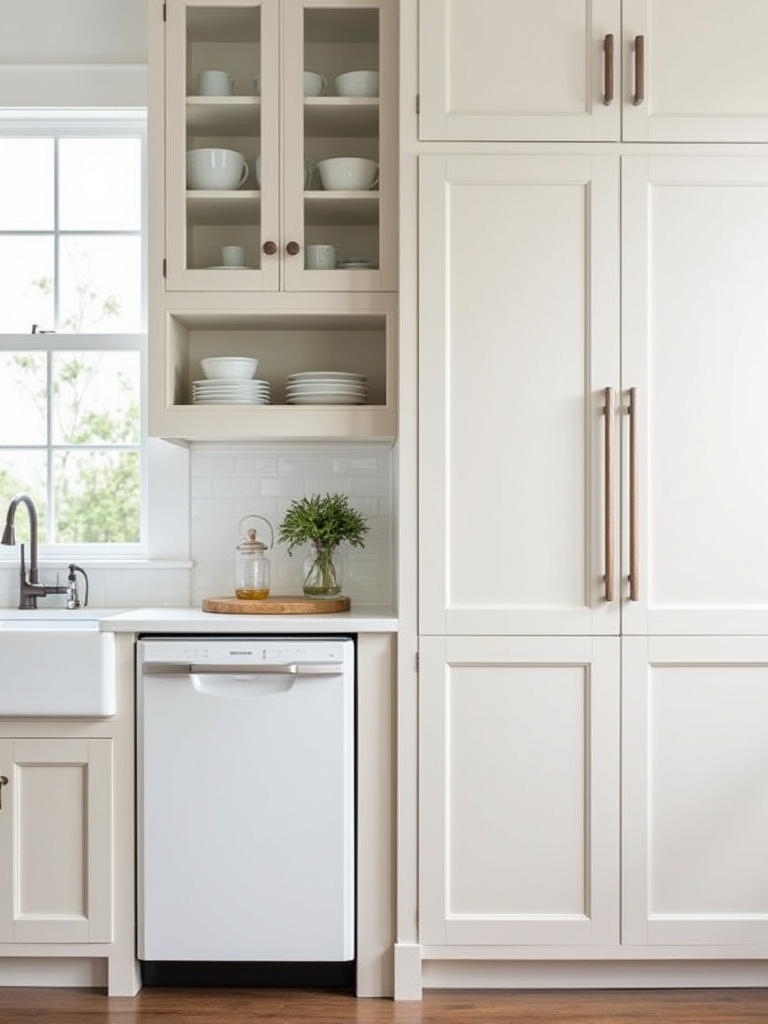
A client of mine was heartbroken because her new kitchen felt just as cluttered as her old one. The problem? She’d dedicated prime cabinet real estate to displaying her grandmother’s china, while her everyday pots and pans were crammed into a tiny, inaccessible corner cabinet. We need to be realistic. I tell my clients to divide their cabinets into three categories: hardworking hidden storage (deep drawers for pots, a pull-out pantry), beautiful display (a glass-front cabinet or a few open shelves for your most treasured pieces), and seamless appliance integration (like a garage for the toaster and coffee maker). This thoughtful zoning is what separates a chaotic kitchen from a serene one.
Now, let’s talk about the very material that will bring this vision to life.
4. Considering Cabinet Materials for Durability and Farmhouse Aesthetic
The soul of a farmhouse kitchen truly lives in its materials. This isn’t the place for glossy, factory-perfect finishes that feel cold to the touch. You want materials that feel like they have a history, or at the very least, have the integrity to build one. Solid wood is the heart of this aesthetic. Think of the way an old wooden table in an Indian home is worn smooth by generations of hands—that’s the character we’re after. Oak, maple, and cherry are beautiful, durable choices that will age gracefully with you.
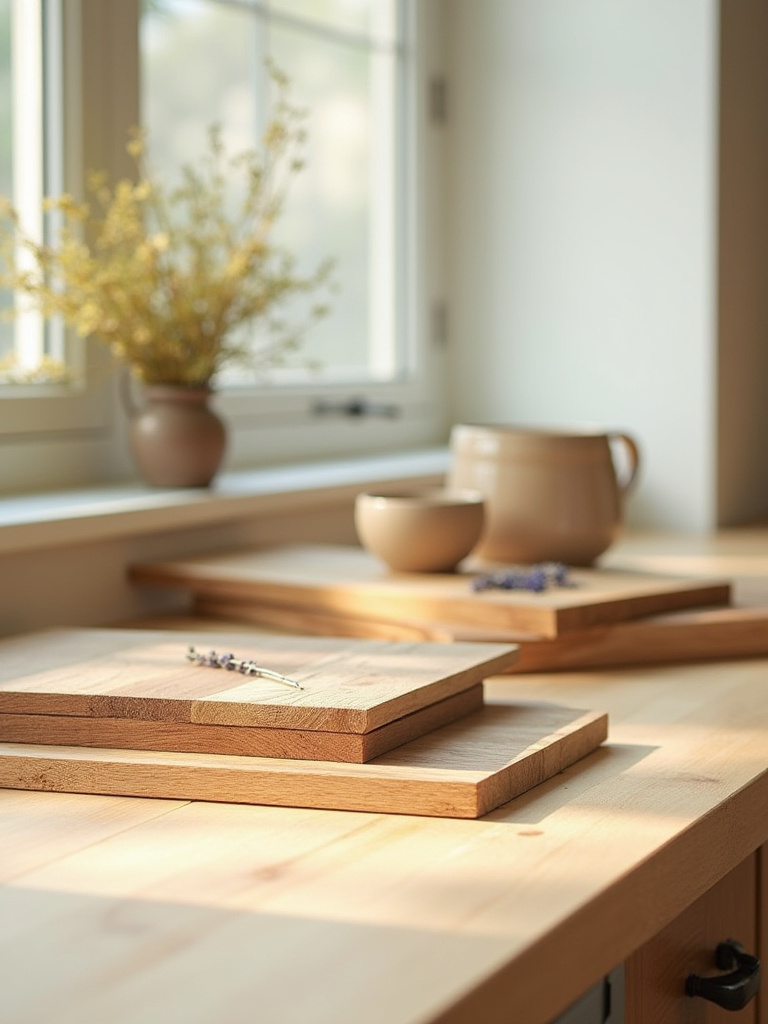
Please, can we talk about the allure of “cheaper” options like particleboard? It’s often a false economy. I once saw a client’s beautiful new farmhouse kitchen ruined within a year because a small leak under the sink caused their particleboard cabinet bases to swell up like a sponge. It was a mess and a total heartbreak. For the cabinet boxes—the internal structure—a high-quality plywood is your best friend. It’s stable, durable, and much more forgiving with moisture. For the doors, nothing beats the feel and longevity of solid wood. This is the noise you can ignore: don’t let anyone tell you an inferior material “looks just as good.” It won’t feel as good, and it certainly won’t last.
Planning Your Authentic Farmhouse Cabinet Design (Part 2)
We’ve dreamed up the soul and skeleton of your kitchen. Now it’s time to bring it into the real world with practical planning and budgeting. This is the less glamorous part, but it’s what ensures your beautiful vision doesn’t turn into a financial nightmare.
5. Budgeting for Quality Farmhouse Cabinetry and Installation Costs
I used to think budgeting was the boring part. Then I saw a client lose weeks of progress and peace of mind because they didn’t account for installation costs, which can be a huge chunk of the total. Think of it this way: you can buy the most exquisite, hand-embroidered fabric, but if the tailor is unskilled, the final garment will be a disaster. The same is true for your cabinets. Quality installation is not where you want to cut corners.
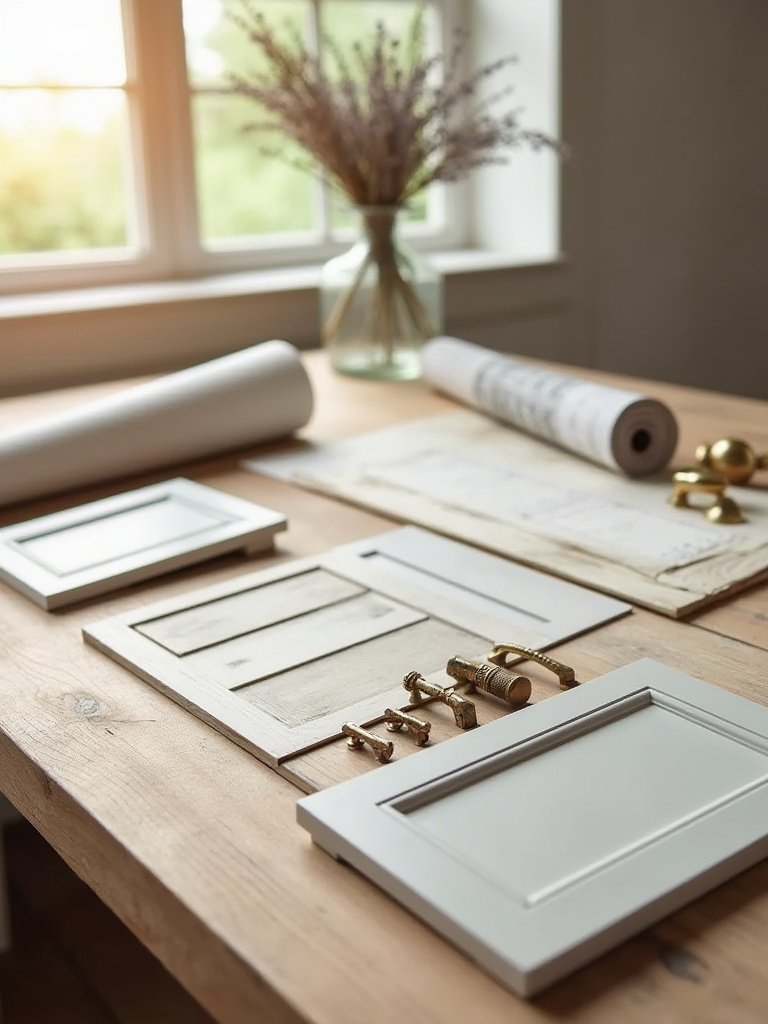
Here’s the shortcut you need: when you’re budgeting, get at least three detailed quotes, and make sure they break down the cost of the cabinets, the hardware, the delivery, and the installation separately. Then, whatever that total number is, add another 15% on top for a contingency fund. I promise you, something will come up. Maybe a wall isn’t straight or some hidden plumbing is discovered. That fund isn’t for “if” something goes wrong; it’s for “when.” It’s the difference between a stressful project and a smooth one.
With a realistic budget in hand, you can start to truly visualize the final result.
6. Utilizing Design Tools and Inspiration Boards for Cabinet Vision
You know what everyone gets wrong about Pinterest? They use it as a collection, not a curation. A board with 500 images of different kitchens isn’t a vision; it’s visual noise. The goal here is to refine, to distill all those ideas into a single, clear picture of your kitchen. It’s like creating a “thali”—that beautiful Indian platter where every small dish has its own unique flavor, but they all work together in perfect harmony.
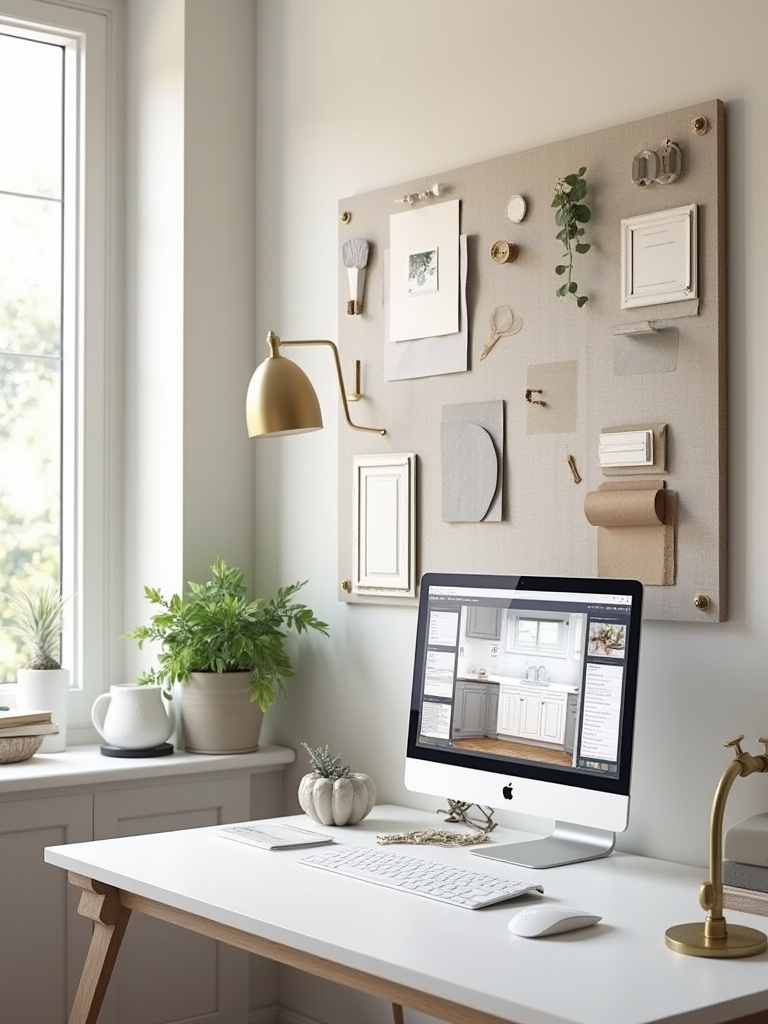
The best way to do this is to create a physical mood board. Digital is great for gathering, but physical is for deciding. Get a small sample of your chosen cabinet wood, a paint swatch, a piece of metal for your hardware, and a sample of your countertop. Put them all together on a board. Live with it for a few days. Look at it in the morning light, in the evening, under your kitchen lights. Do these elements sing together? This tactile process is invaluable. It moves your vision from your head into the real world and will give you the confidence to say “yes” to the right things and “no” to the distractions.
Selecting and Installing Your Dream Farmhouse Cabinets (Part 1)
This is the exciting part—where the plans on paper start becoming solid and real. Choosing the style and finish is like choosing the silhouette and fabric of a bespoke garment. These are the decisions that will define the character of your kitchen for years to come.
7. Choosing Shaker or Inset Cabinets for a Classic Farmhouse Foundation
You’ll hear two words thrown around a lot: Shaker and Inset. Here’s the simple difference. Shaker cabinets have a simple, clean frame around a flat panel—they are timeless, versatile, and the chameleon of the cabinet world. Inset cabinets are a bit more special. The door sits perfectly flush inside the cabinet frame, like a piece of fine furniture. It’s a subtle difference, but it speaks volumes about craftsmanship.
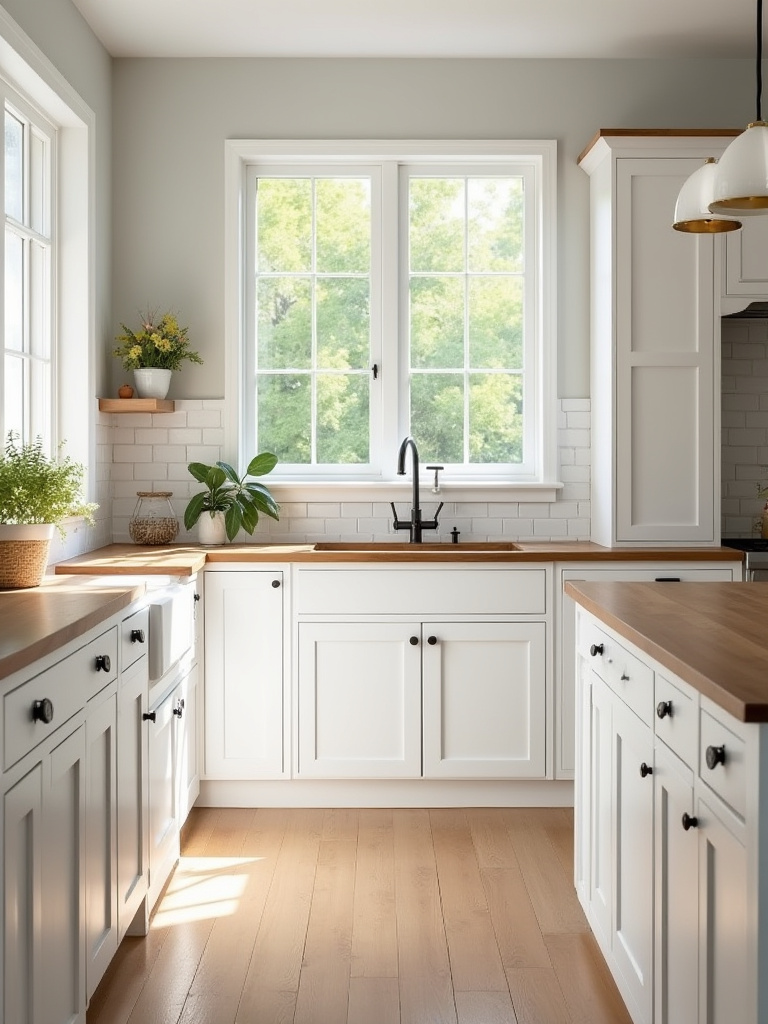
There’s no right or wrong answer here, but here’s my take. Shaker is the beautiful, hand-woven cotton of the cabinet world—it’s honest, hardworking, and fits in almost anywhere. Inset is like hand-carved sandalwood—it requires more precision, it costs more, and it speaks to a deeper level of artistry. If your budget allows and you love that bespoke, heirloom quality, inset is a dream. But a well-made Shaker cabinet will give you 90% of that classic farmhouse feel with more flexibility and a gentler price tag.
The style sets the form, but the finish gives it its voice.
8. Selecting the Perfect Paint or Stain Finish for Rustic Charm
A pet peeve of mine? When a beautiful, solid wood cabinet is slathered in a thick, plastic-y, high-gloss paint. It suffocates the material! The beauty of a farmhouse finish is its texture and softness. Whether you choose paint or stain, it should feel like it has a story. Think about matte or satin finishes that absorb the light rather than reflecting it. Muted colors like sage greens, buttery creams, and moody blues have a historic, soulful quality.
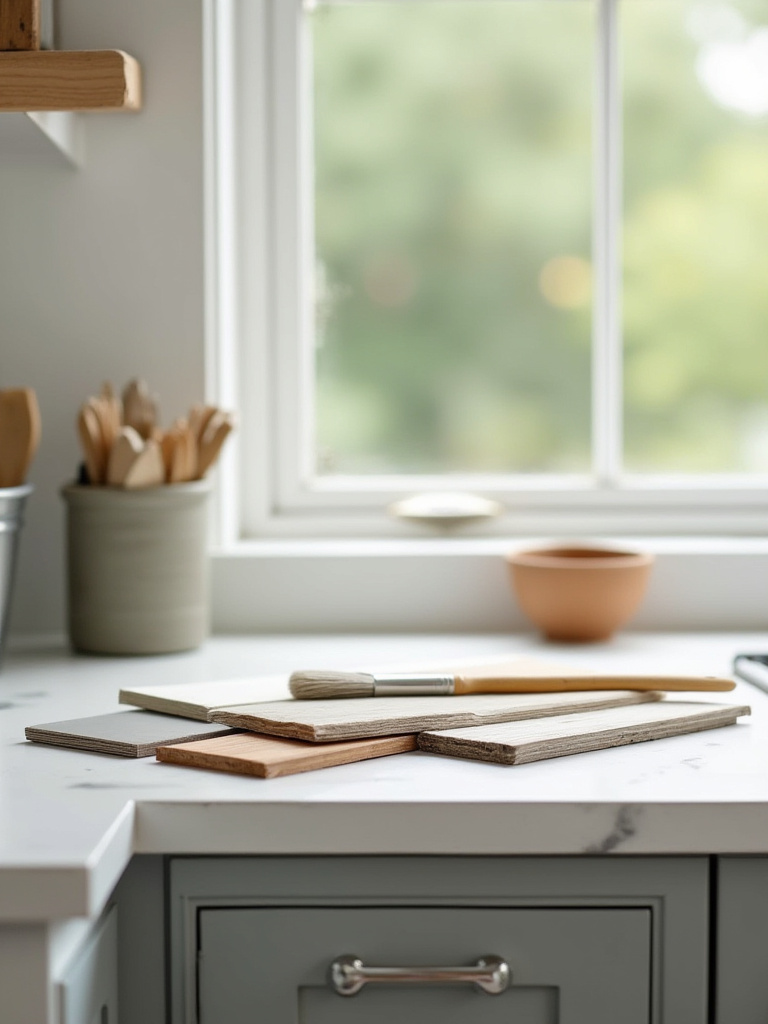
If you’re choosing a stain, don’t hide the grain! The knots and patterns in the wood are part of its beauty, like the “imperfections” in a block-printed fabric that prove it was made by human hands. One of my favorite techniques is to use a light-colored stain or even a “pickling” wash that allows the natural character of the wood to shine through. The secret is to let the material speak for itself. Always test your finish on a sample door and look at it in your actual kitchen light before you commit. What looks soft and lovely in a showroom can look harsh and sterile under your kitchen’s fluorescent lights.
Now for a design choice that can completely change the feeling of your space.
9. Incorporating Open Shelving Strategically for Display and Lightness
I know open shelving can be polarizing. People are terrified of dust and clutter. But used strategically, a few open shelves can be like a deep, cleansing breath for your kitchen. A wall of solid upper cabinets can feel heavy and imposing, especially in a smaller space. Breaking it up with a run of open shelving creates an illusion of spaciousness and light. It’s the perfect place to bring in personality.
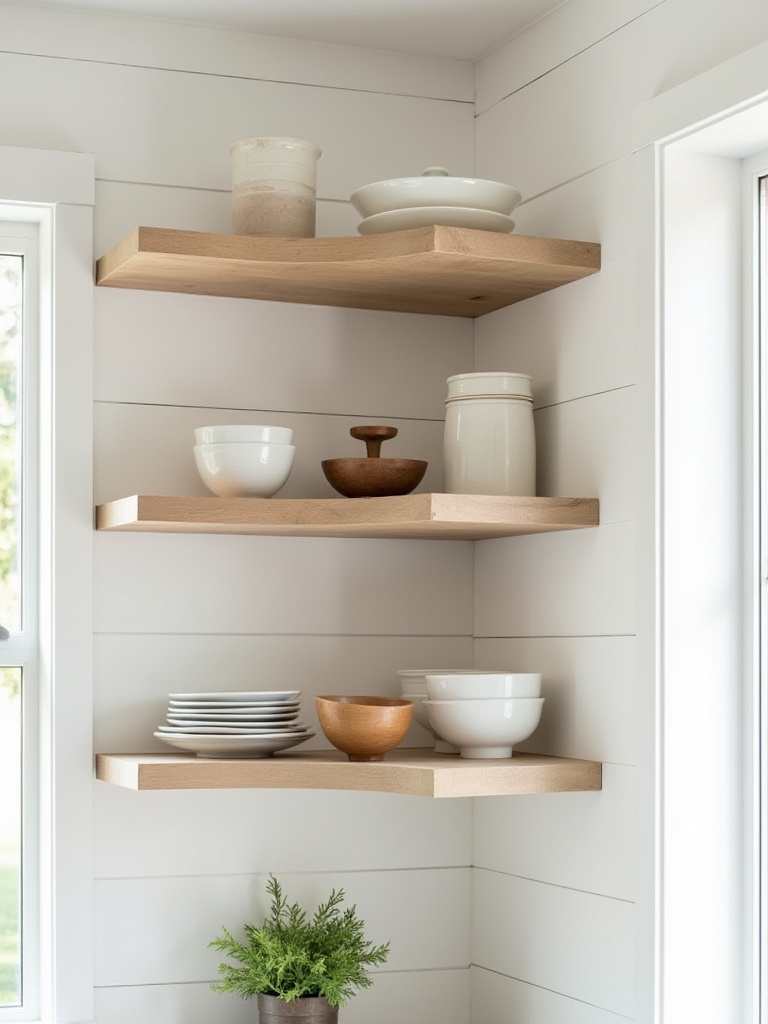
The trick is curation. This isn’t the place for your plastic sippy cups. It’s for your everyday dishes that you love, a stack of favorite cookbooks, a beautiful ceramic pot holding wooden spoons, or a small plant. The BS everyone tells you is that it has to be perfectly styled all the time. The reality is, if you’re displaying the things you use and love every day, it will naturally look authentic and beautiful. Think of it as a small, rotating gallery of your life. My advice? Start small. Replace one small upper cabinet with two or three shelves and see how it feels.
Putting it all together requires a skilled hand, which brings us to a crucial point.
10. Partnering with a Skilled Cabinet Installer for Flawless Fit
Let me confess something. I once thought I could save money by hiring a general handyman to install a set of beautiful, custom-made cabinets for a client. It was a disaster. Nothing was level, the doors didn’t close properly, and the beautiful “heirloom” feel we were going for was completely lost. We had to hire a specialist to come and fix it, which cost twice as much as it would have to just hire the right person from the start.
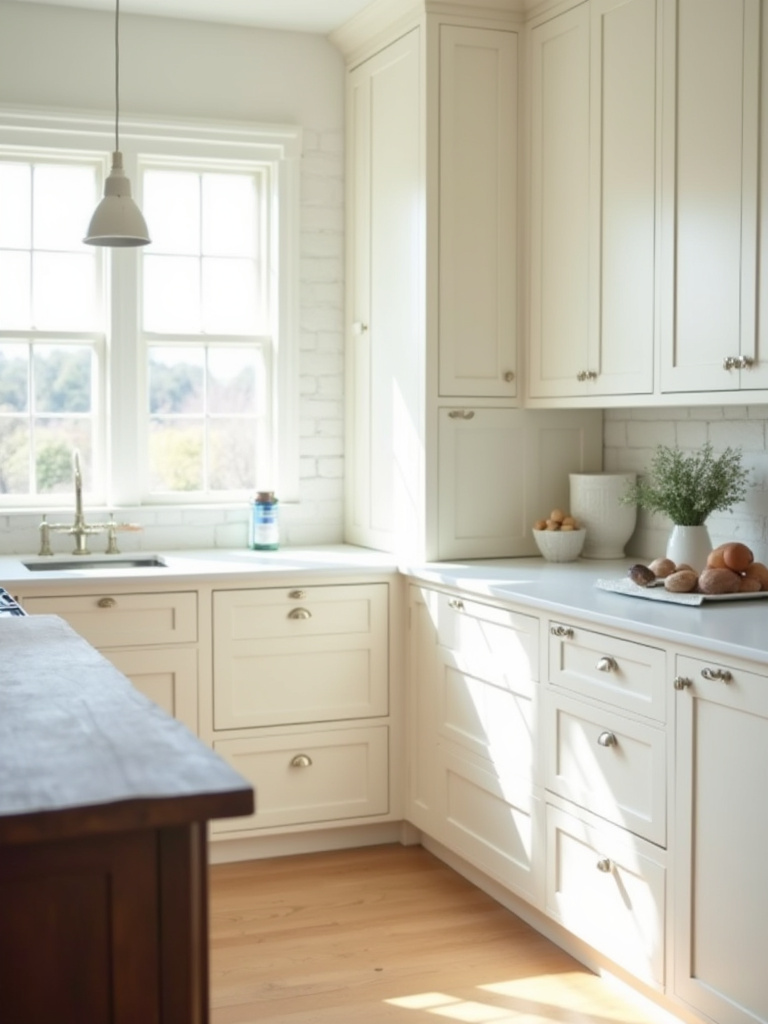
A skilled cabinet installer is an artisan. They understand how to work with imperfect walls, how to shim and level everything to the millimeter, and how to ensure every door and drawer glides open and closed with a satisfying, silent click. This is not just labor; it’s craftsmanship. Ask to see a portfolio, call their references, and make sure they are insured. The peace of mind you get from knowing your investment is in expert hands is worth every single penny.
Selecting and Installing Your Dream Farmhouse Cabinets (Part 2)
We’ve made the big decisions, and the cabinets are going in. Now it’s time for the details that elevate the entire design. These are the finishing touches that truly make the kitchen yours.
11. Understanding Hardware Selection: Knobs, Pulls, and Their Impact
Ah, the hardware! This is truly the jewelry of the kitchen. In India, a woman’s jewelry tells a story—is it her heavy wedding gold, her everyday silver bangles, her temple jewelry? It all communicates something different. The hardware on your cabinets does the same thing. Heavy, dark cast iron pulls feel rustic and grounded. Sleek, matte black pulls feel modern and clean. Warm, unlacquered brass pulls will patinate and age over time, telling a story of every hand that has touched them.
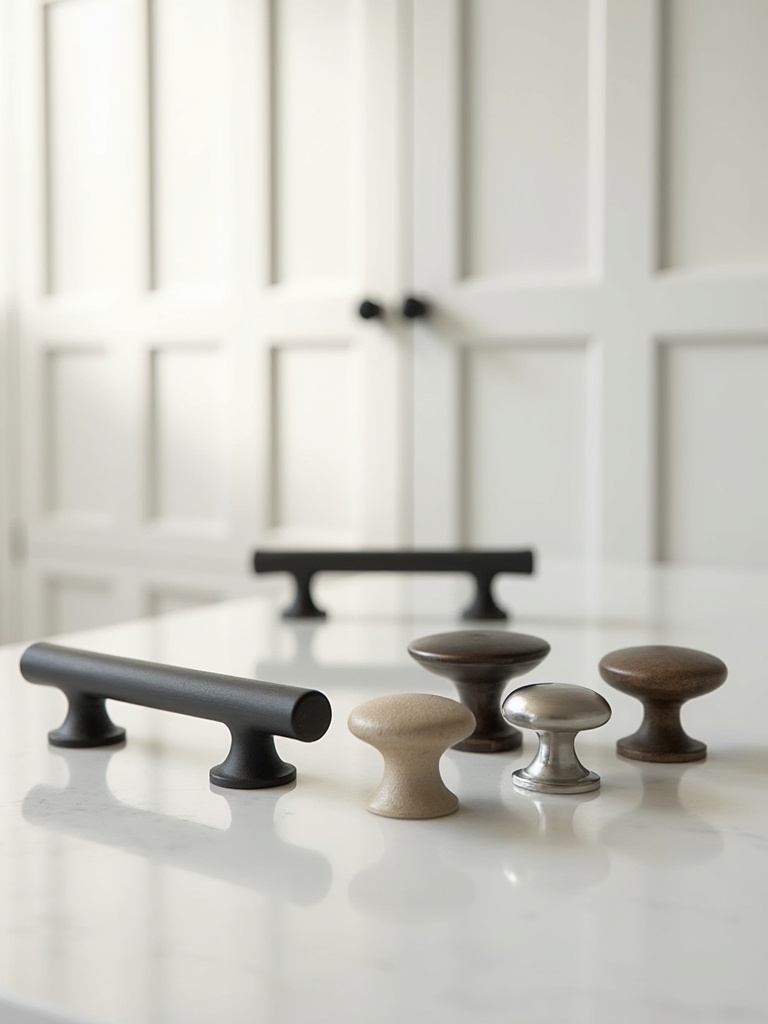
The biggest mistake people make is buying hardware online without ever touching it. I once worked with a client who bought 50 expensive brass pulls that looked gorgeous in the photos. When they arrived, they were hollow, lightweight, and felt cheap in her hand. We sent them all back. The shortcut is to order single samples of your top three choices. Hold them. Feel their weight. See how they feel to pull. This tactile experience is everything. Your hands will interact with this hardware every single day, so it should feel as good as it looks.
Let’s also talk about the magic happening inside the cabinets.
12. Integrating Modern Convenience Features into Traditional Cabinets
Just because we love a traditional aesthetic doesn’t mean we have to live with traditional inconveniences! One of the most beautiful fusions in modern design is embedding brilliant, contemporary functionality within classic forms. Think of a beautifully weathered cabinet door that opens with a soft-close hinge, or a deep drawer that looks simple from the outside but glides out to reveal a perfectly organized system for pots and lids.
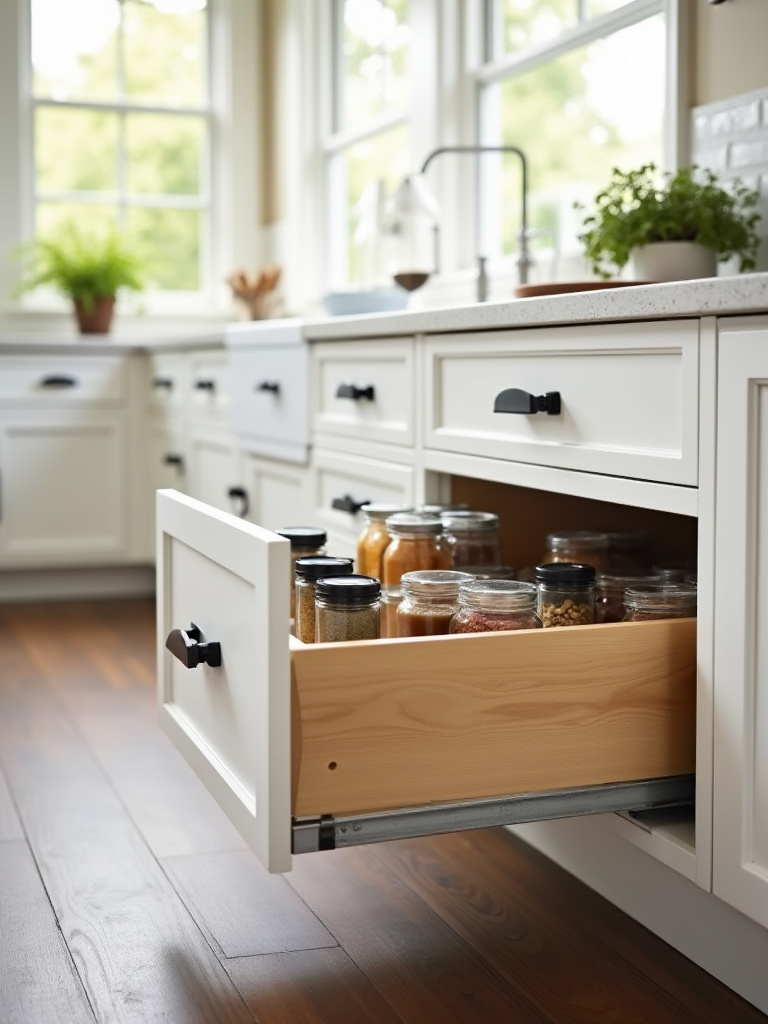
The noise you can ignore is the idea that these modern features will somehow “ruin” the authentic farmhouse feel. The truth is the opposite. When done well, they enhance it by making the kitchen a joy to use. My favorites are pull-out trash and recycling bins (who wants to look at a trash can?), vertical dividers for baking sheets, and those miraculous systems for blind corner cabinets that bring everything right out to you. The key is that the convenience is hidden. The magic is revealed only when you open the door.
Enhancing Farmhouse Cabinet Style and Functionality (Part 1)
With the core elements in place, we can now add layers of detail and function that will make your kitchen truly sing. These are the touches that create ambiance, enhance usability, and add a bespoke quality.
13. Brightening Your Cabinets with Under-Cabinet and Interior Lighting
You would never light a beautiful painting with a single, harsh overhead bulb. Why would you treat your kitchen any differently? Under-cabinet lighting is non-negotiable for me. It’s not just for ambiance; it’s a functional necessity. It illuminates your workspace, eliminating those frustrating shadows cast by the upper cabinets, making chopping and prep work safer and easier. It also makes your kitchen feel warmer and more inviting.
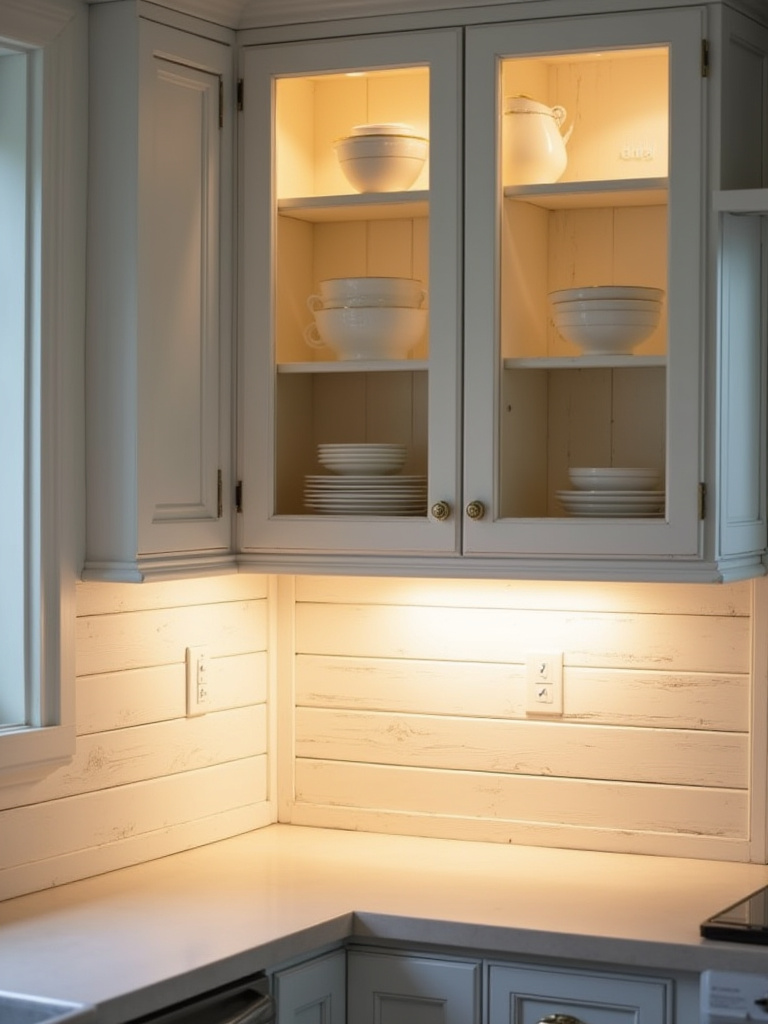
The trick is to use a warm-toned LED light (look for something around 2700K-3000K on the Kelvin scale). This mimics the soft glow of incandescent bulbs and complements the cozy farmhouse aesthetic perfectly. And if you have any glass-front cabinets, placing a small light inside turns them into beautiful glowing vitrines at night. It’s a simple addition that adds an incredible layer of sophistication and warmth to the entire room.
This beautiful light will, of course, illuminate your countertops.
14. Matching Countertop Materials to Complement Cabinetry Aesthetic
Choosing a countertop is like choosing a silk for a sari—it must complement the main fabric, not compete with it. For a truly soulful farmhouse kitchen, materials that have a natural, tactile quality are best. Soapstone is a personal favorite; it has this soft, velvety feel and it develops a beautiful patina over time. Butcher block, especially on an island, adds incredible warmth and a rustic, utilitarian charm.
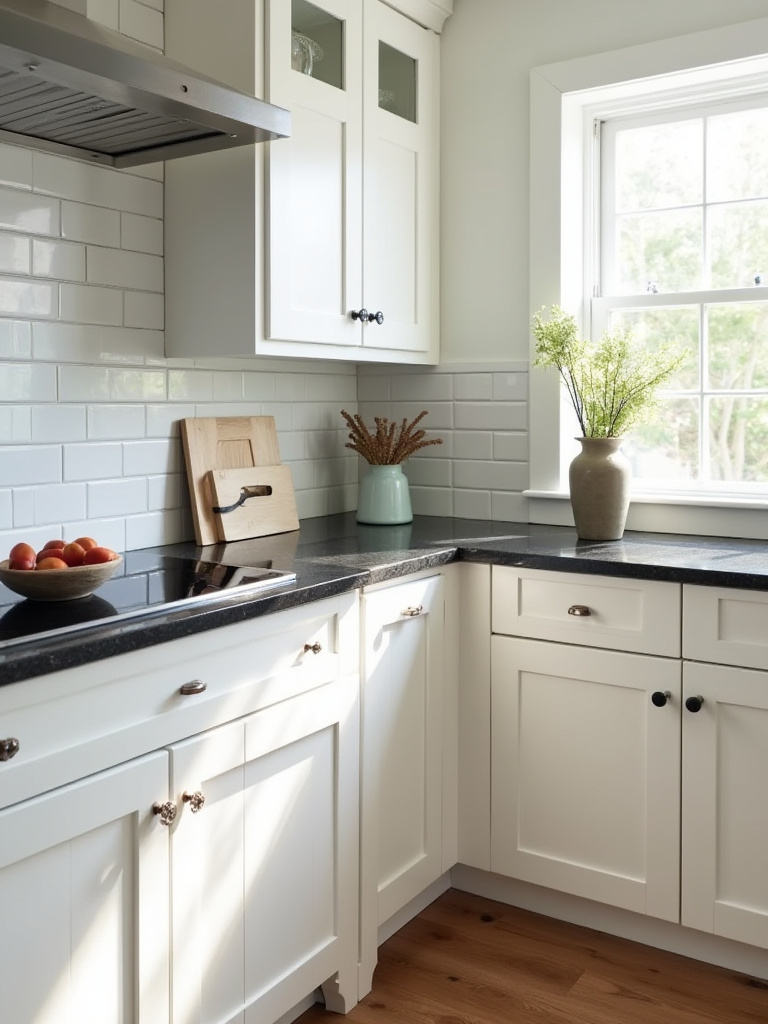
What’s just noise? The idea that everything has to be shiny and perfect. So many people default to high-polish granite or quartz, but a honed or matte finish often feels much more at home in a farmhouse setting. Don’t be afraid of contrast! With classic white or cream cabinets, a dark, moody countertop in honed black granite or soapstone can be absolutely breathtaking. It grounds the space and adds a touch of sophisticated drama. Always, always, always bring a sample of your countertop home and look at it next to your cabinet door in your kitchen’s natural light.
The space inside your cabinets deserves just as much thought.
15. Optimizing Cabinet Interiors with Smart Organization Systems
This is where the real magic happens. A beautiful kitchen that is a nightmare to use is not a successful design. Smart organization is what allows you to maintain that clean, uncluttered farmhouse aesthetic on the outside. It’s about creating a dedicated home for everything, so you know exactly where to find the cinnamon or the right-sized pot lid.
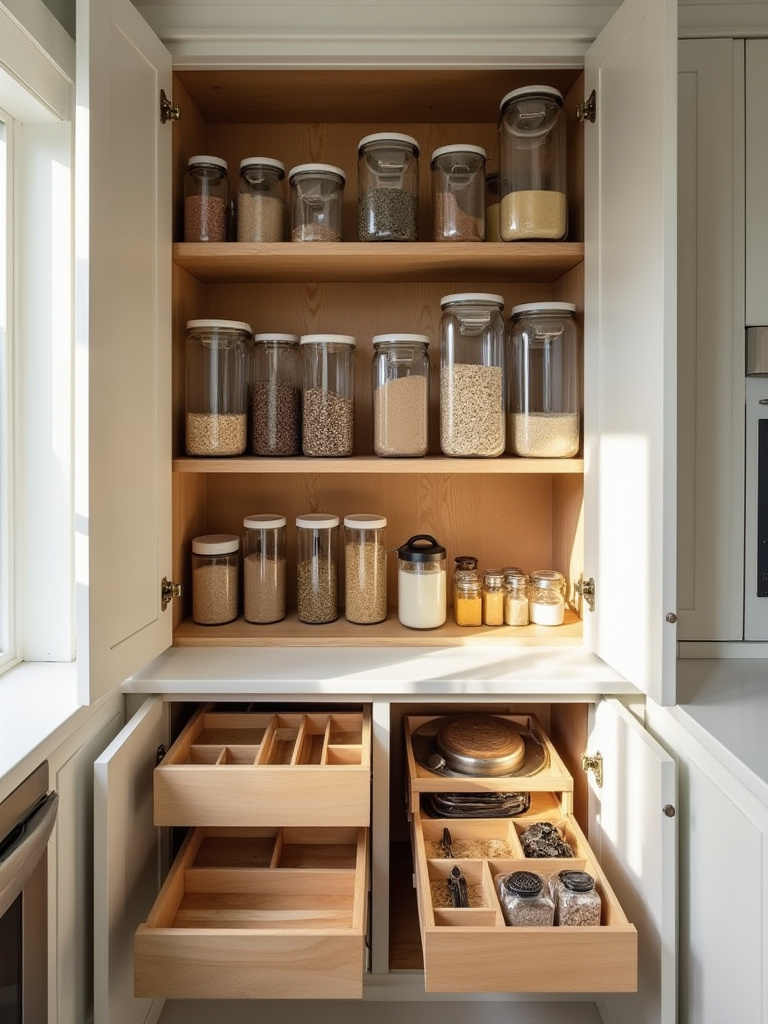
I learned the hard way that you can’t just buy a bunch of organizers and hope for the best. You must first empty your cabinets and be ruthless about what you actually need. Only then can you design a system. My favorite shortcuts are full-extension pull-out shelves in lower cabinets (no more getting on your hands and knees to find something in the back!), drawer dividers for utensils and spices, and vertical storage for baking sheets and cutting boards. It’s a game-changer that transforms daily frustrations into moments of quiet efficiency.
Now for the little details that add so much character.
16. Adding Decorative Elements: Corbels, Moulding, and Toe Kicks
Think of these elements as the beautiful borders on a hand-woven carpet or the tassels on a cushion—they are the finishing touches that signal a high level of craftsmanship and care. Crown moulding at the top of your cabinets helps to connect them to the ceiling, giving them a more built-in, intentional look. A simple corbel under an open shelf or an island overhang adds a touch of architectural grace.
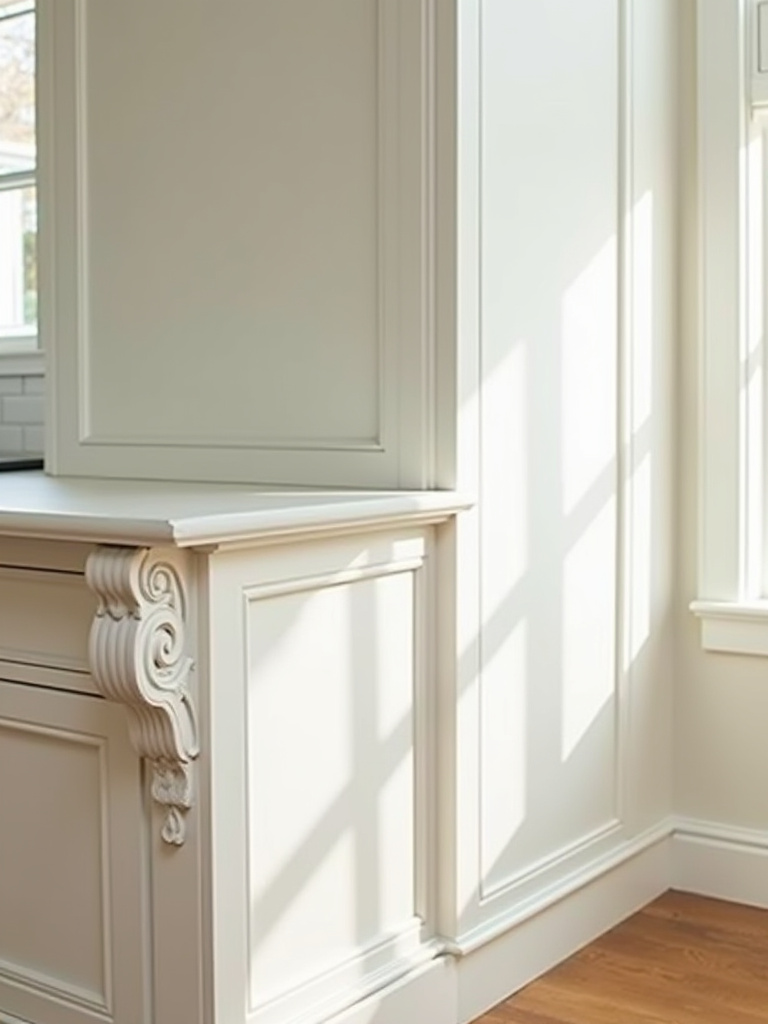
My favorite trick is to add furniture-style feet or a decorative toe-kick to the base of the cabinets, especially on an island. This small detail makes the cabinetry feel less like a row of boxes and more like a collection of beautiful, freestanding furniture pieces. It’s a subtle shift, but it has a massive impact on the overall character and custom feel of your kitchen.
Enhancing Farmhouse Cabinet Style and Functionality (Part 2)
We’re moving into the more advanced techniques now. These are the strategies that create a seamless, integrated, and truly high-functioning kitchen that feels both timeless and perfectly suited for modern life.
17. Incorporating Built-In Appliance Panels for a Seamless Look
There is nothing that breaks the visual serenity of a beautiful run of cabinetry faster than a big, shiny stainless steel dishwasher front. Integrating your appliances with custom panels that match your cabinets is the ultimate way to create a calm, cohesive, and sophisticated look. It allows the beauty of your cabinetry to be the uninterrupted star of the show.
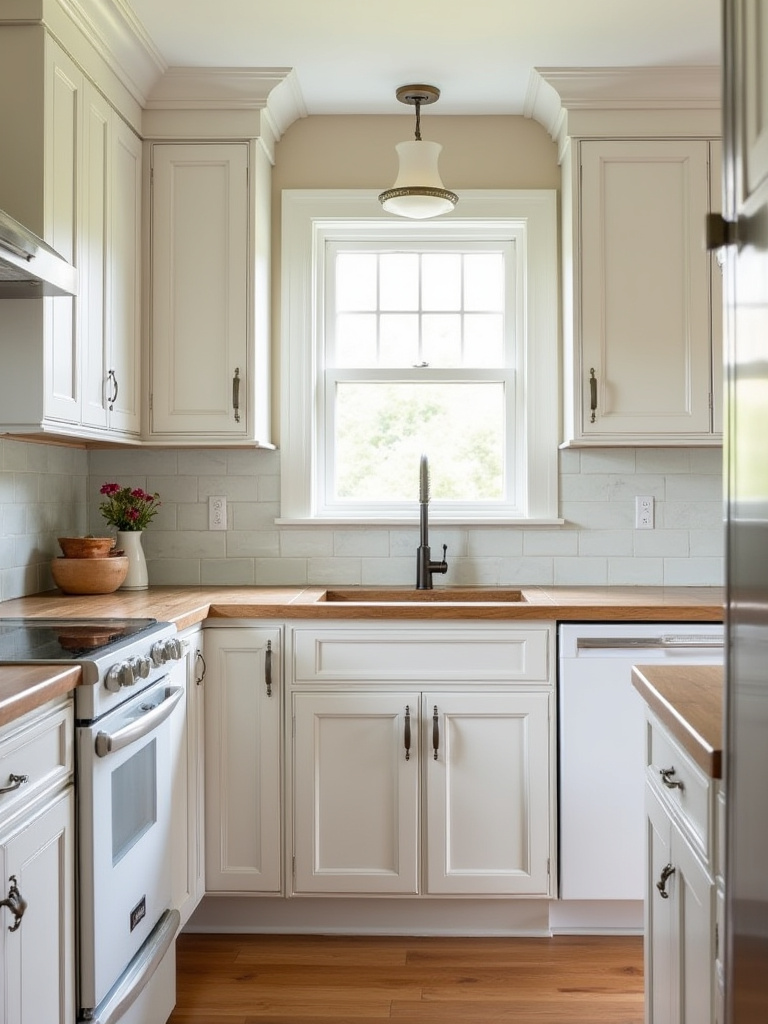
I had a client who was hesitant about this, worried it would be fussy. But when she saw the result—her dishwasher and refrigerator simply disappearing into the wall of beautiful, custom cabinetry—she was completely converted. The kitchen felt larger, more serene, and infinitely more elegant. The secret is to plan for it from the very beginning. You need to buy “panel-ready” appliances, which are specifically designed to accept a custom cabinet front. It’s an investment, but for creating that truly seamless, high-end farmhouse look, it is unparalleled.
Your island can also be a star player in both storage and style.
18. Utilizing Island Cabinetry for Extended Storage and Character
The kitchen island should be the most hardworking piece of furniture in your home. It’s not just extra counter space; it’s a powerhouse of storage and a canvas for personality. This is the perfect place to do something a little different. Consider painting the island a contrasting color from your perimeter cabinets or cladding it in a different material, like reclaimed shiplap. This makes it feel like a unique, found piece of furniture.
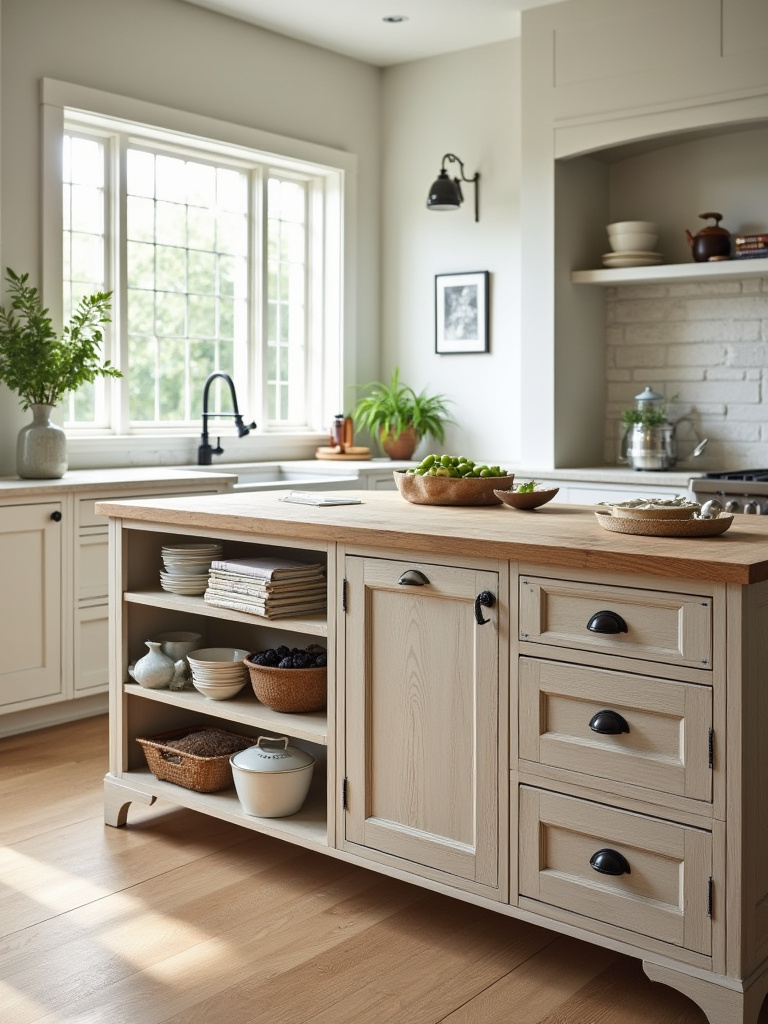
Think about how you’ll use it from all sides. Maybe one side has deep drawers for pots and pans facing the stove, while the other side has shallow cabinets for cookbooks or a built-in wine rack facing the dining area. Don’t just think about the front; design all four sides. I once designed an island with a shallow open shelf at one end, just deep enough for the family’s dog bowls. It was a small touch, but it showed that the space was designed for the entire family, four-legged members included.
Maintaining and Future-Proofing Your Farmhouse Cabinetry
You’ve created your dream kitchen. Now, let’s make sure it stays beautiful for a lifetime. True quality isn’t just about how things look when they’re new, but how they can be cared for and gracefully aged over time.
19. Establishing a Routine Cleaning and Care Schedule for Finishes
You know what’s the enemy of a beautiful cabinet finish? Procrastination. It’s those little splatters of spaghetti sauce, those drips of oil, those wet hands reaching for a knob that, left over time, will slowly degrade the finish. The secret to long-lasting beauty is a simple, gentle, and consistent routine.
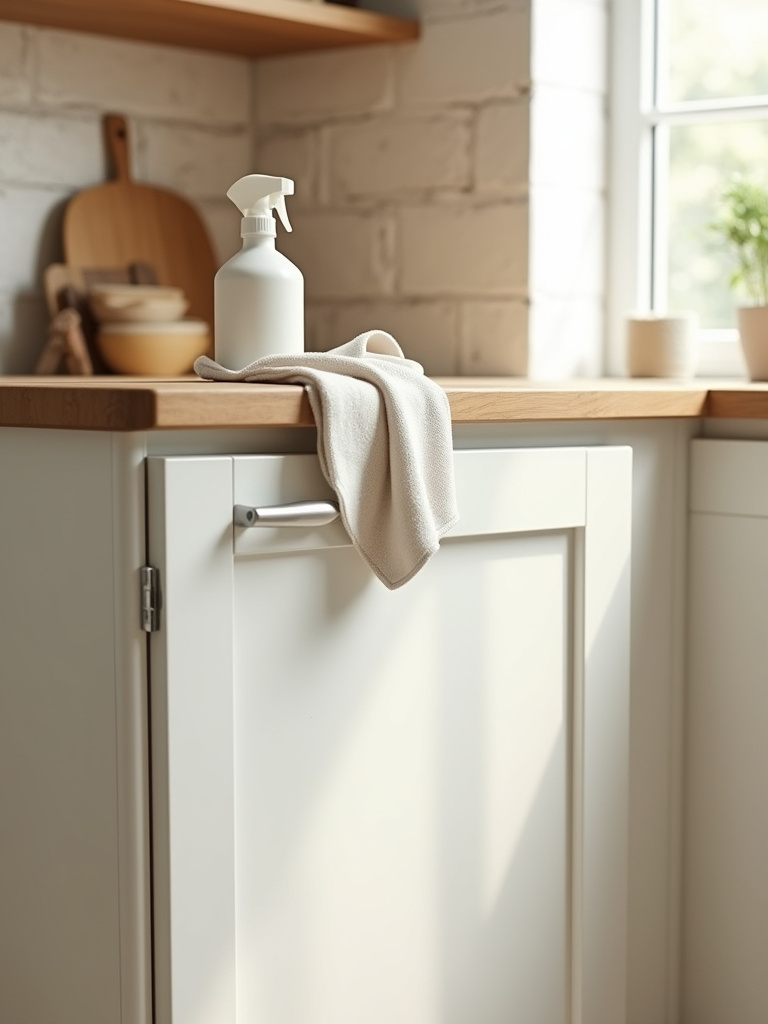
Keep a soft microfiber cloth and a gentle, pH-neutral cleaner handy for daily wipe-downs of any spills. Abrasive cleaners and scouring pads are a definite no—they will scratch and dull your finish. Think of it like caring for a beautiful wooden sculpture or a piece of silk; you wouldn’t scrub them with harsh chemicals. Gentle, regular care will preserve the integrity and luster of your cabinet finish for decades, allowing it to develop a natural patina rather than looking worn out.
Being vigilant also means keeping an eye out for small problems.
20. Identifying and Addressing Common Wear and Tear Issues
Once a season, take ten minutes and give your cabinets a proper check-up. Open every door and drawer. Do the hinges feel loose? Do the drawer slides feel sticky? Look closely at the finish, especially around the sink and stove—the high-traffic areas. Are there any small nicks or scratches?
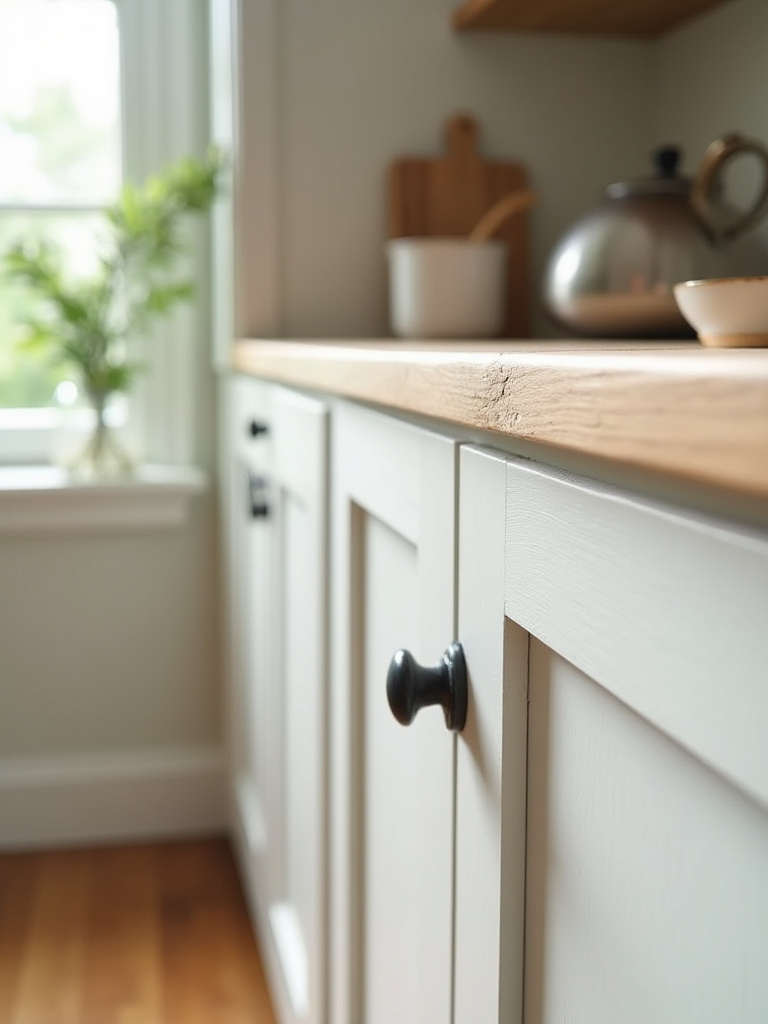
Keeping a small touch-up kit from your cabinet manufacturer is one of the smartest things you can do. A tiny dab of paint on a chip before moisture can get in can prevent a much bigger problem down the road. Tightening a loose screw on a hinge takes 30 seconds but can prevent a door from sagging permanently. This isn’t about being fussy; it’s about honoring the investment and craftsmanship of your kitchen with mindful stewardship.
One of the biggest threats to that investment is a constant battle.
21. Preventing Moisture Damage and Wood Warping in Cabinets
Wood is a living, breathing material. It expands and contracts with changes in humidity, and it is a sworn enemy of standing water. This is the number one thing that will ruin your beautiful farmhouse cabinets if you’re not careful. The key is threefold: ventilation, vigilance, and quick action. Always use your exhaust fan when you’re cooking to pull steam away from your cabinet faces.
The most common mistake is ignoring a tiny, slow leak under the sink. It seems like nothing, but that constant dampness is a silent cabinet killer. Place a waterproof mat inside your sink cabinet to catch any small drips and check it regularly. Wipe up any spills on your countertops immediately, making sure no water runs down the front of the cabinet faces. This diligent attention to moisture is the single most important thing you can do to ensure your cabinets last a lifetime.
And speaking of a lifetime, let’s plan for the future.
22. Planning Future Cabinet Refinishing or Hardware Upgrades
One of the most beautiful things about investing in quality, solid wood cabinets is that they are not a disposable product. They have the ability to be reborn and evolve with your style over the decades. Today, you might love that soft sage green, but in ten years, you might crave a deep, moody blue. With solid wood cabinets, that’s a simple (and relatively inexpensive) refinishing project, not a full-scale renovation.
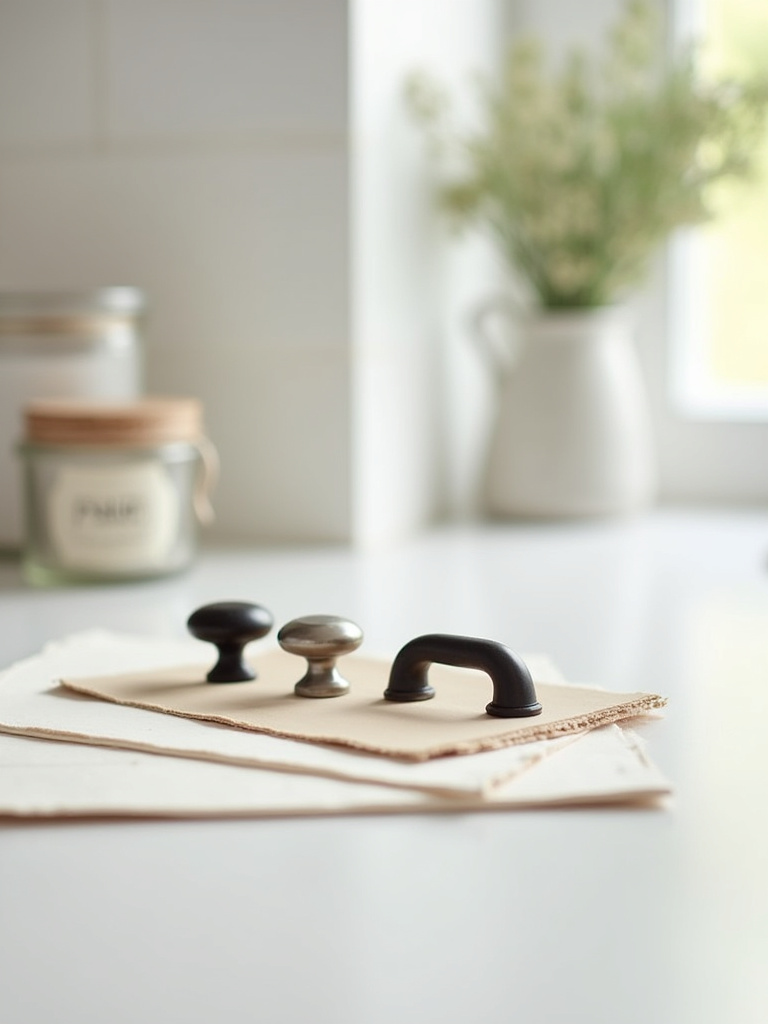
When you’re choosing your initial hardware, try to stick with standard sizes for the pulls (the distance between the screw holes). This is a tiny detail, but it will make your life so much easier in the future. Swapping out hardware is the fastest, easiest, and most impactful way to give your kitchen a refresh. If your new pulls have the same standard measurement, it’s a simple 30-minute job, not a project that requires filling old holes and drilling new ones. Planning for this future flexibility from day one is the ultimate pro move.
Conclusion
So there you have it. The secret to a farmhouse kitchen with true soul isn’t found in a catalog or a trend report. It’s built from a foundation of thoughtful planning, an honor for authentic materials, a commitment to craftsmanship, and a vision for a space that feels uniquely yours. It’s about creating a kitchen that not only looks beautiful but feels wonderful to be in—a kitchen that supports you, nourishes you, and holds the stories of your life.
This journey is about more than just cabinets; it’s about creating the true heart of your home. It’s a space where the scent of baking bread can mingle with the aroma of simmering spices, where generations can gather, and where everyday moments are elevated into cherished memories. So take these ideas, infuse them with your own story, and create a space that you will love for decades to come.
